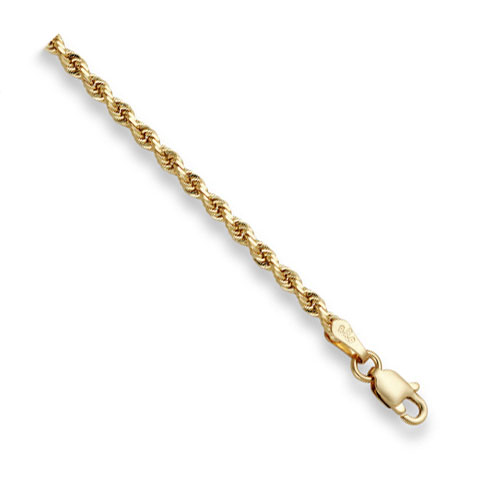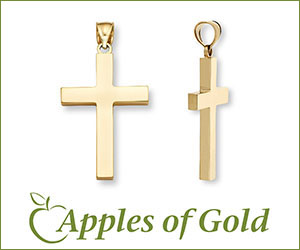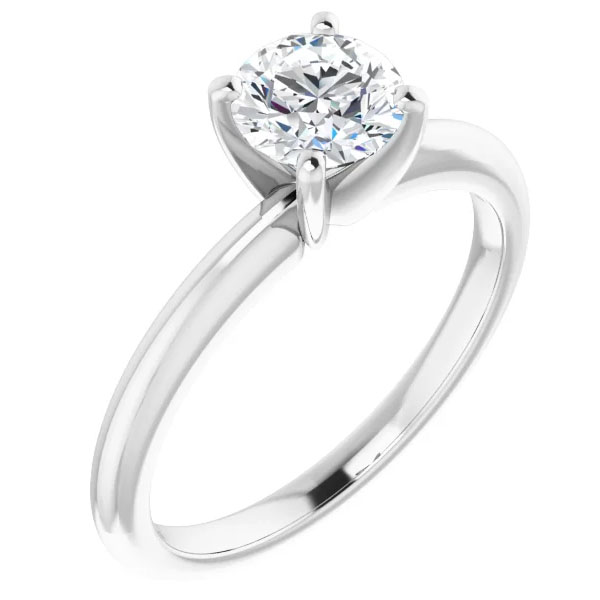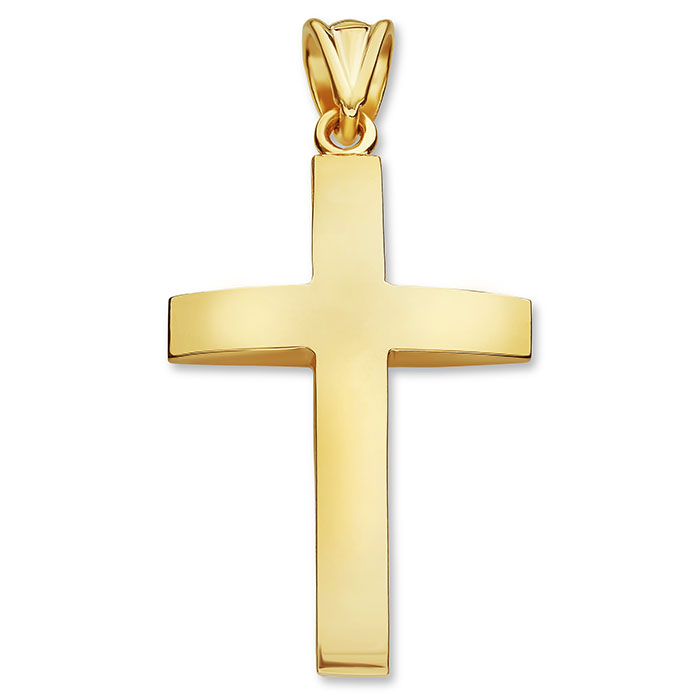How to Convert Precious Metal Weights: 14K to 18K, 22K, Platinum
Precious metals like gold, platinum jewelry, and silver are valued for their beauty, rarity, and versatility. They have been used in jewelry making for centuries, and their popularity shows no sign of waning. However, the value of these metals can vary based on factors such as their purity and weight. For this reason, it is important to know how to convert metal weights, especially when dealing with alloys like 10k to 14k gold or 14k to 18k gold, 22k gold or platinum. In this guide, we’ll help you learn how to use a precious metals conversion chart to convert metal weights effectively.
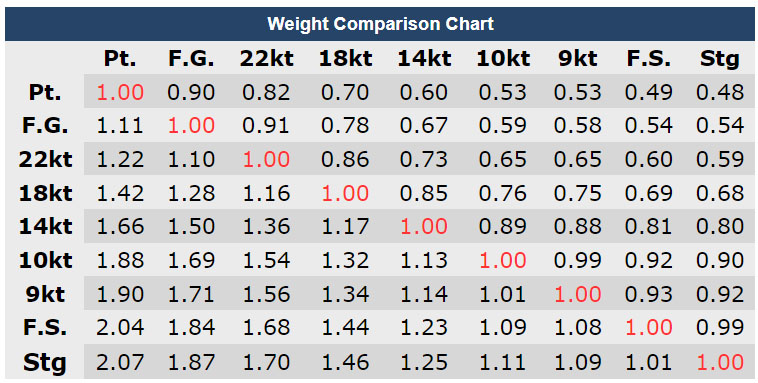
How to Convert 14K, 18K, 22K or Platinum Weights
(1) Start with the present metal in the left vertical column
(2) Multiply the weight of your jewelry by the number in the same horizontal row under the new metal.
For example: An 8 gram 14k gold chain should be multiplied by 1.17 to get its 18k gold, which is 9.36 grams of 18k gold
Converting Precious Metals Weights
The chart above includes conversion factors for various metals, including gold, silver, platinum, and palladium. To use the chart, you need to know the weight of the metal you are converting and the purity of the metal you want to convert it to. For example, if you have 10k gold and want to convert it to 14k gold, you would enter the weight of the 10k gold and select “10k” in the first dropdown menu and “14k” in the second dropdown menu. The chart will then display the weight of the 14k gold that you will have after the conversion.
It is important to note that the conversion factors provided are based on the specific densities of each metal. Therefore, the conversion factor for gold may not be the same as the conversion factor for platinum, even if the weights and purities are the same.
Precious Metals Purity
When converting metal weights, it is also important to consider the purity of the metal. For example, 14k gold is 58.5% pure, while 18k gold is 75% pure. Therefore, if you have 14k gold and want to convert it to 18k gold, you will need to add additional pure gold to the alloy to achieve the desired purity. The amount of pure gold needed will depend on the weight of the metal being converted and the desired purity of the final product.
Finally, it is important to note that converting metal weights can have an impact on the value of the metal. Higher purity metals are generally more valuable than lower purity metals, and this can affect the price of the final product. Additionally, some metals, such as platinum, are generally more valuable than gold, so converting from gold to platinum may result in a higher value product.
Converting precious metal weights can be a useful tool for jewelry makers and collectors alike. Metal conversion charts like the one above provide a reliable source for conversion factors, and considering the purity of the metal being converted is important for achieving the desired results. However, it is important to keep in mind that converting metal weights can have an impact on the value of the metal, and it is important to consider this when making decisions about converting precious metals.



